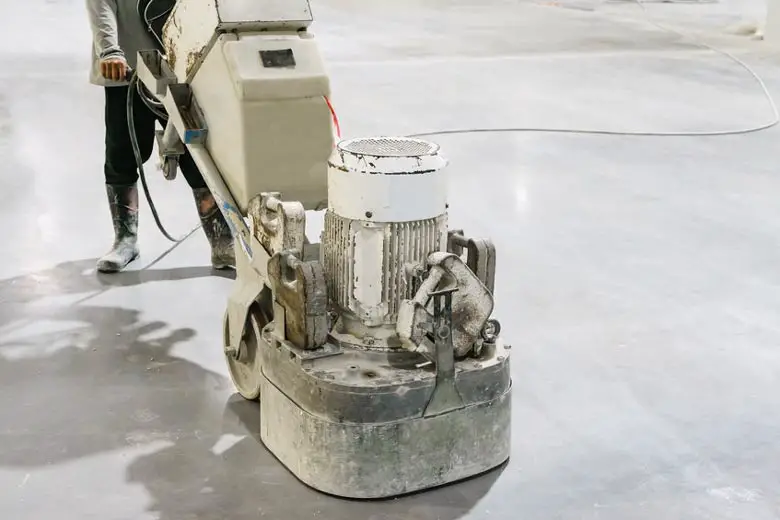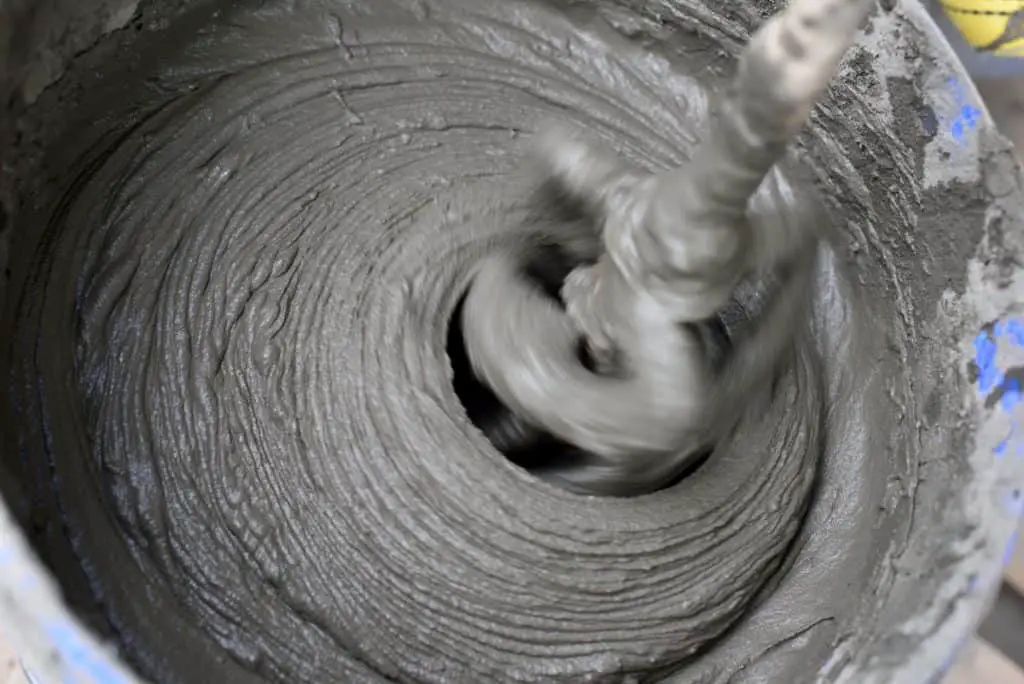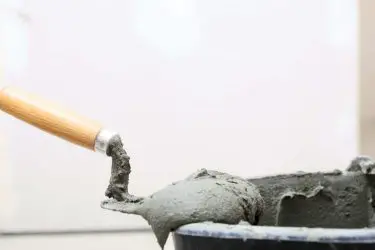Having concrete floors can often be an excellent choice for homeowners; they are extremely strong and durable, easy to maintain, and can create a sophisticated look. On the other hand, you’ve probably come across a common problem with concrete floors: cracking.
Here are seven common reasons why your polished concrete floors may crack:
- The project hasn’t been planned properly.
- There are foundation issues.
- The installation has been faulty.
- The mixture’s consistency wasn’t right.
- The temperature has changed.
- There has been some form of pressure or impact.
- That’s the nature of the material.
In this article, I’ll delve more into the reasons why your polished concrete floors may crack and how to avoid this from happening (when possible) in upcoming projects.

Table of Contents
1. The Project Hasn’t Been Planned Properly
It’s important to have a good plan in place before deciding to install concrete flooring. While the material provides many advantages, you might also want to consider the stress and pressure it will endure.
If you’re planning to keep and move heavy objects (such as large furniture or machinery) around a particular space, it’s probably best not to use concrete as its flooring material. The same goes in case you’re planning to use any strong chemicals within said space.
No matter how durable and strong, your concrete floor has its limits, and when pushed to those limits, it can crack. Hefty weights, like a large piece of machinery, can prove too heavy for the concrete to handle.
The same logic should be applied to chemicals; if there are certain chemical compounds being handled near your concrete floor, there are chances of them interacting with the material, causing it to deteriorate and crack. Remember, this can happen even if your concrete floor is polished.
2 .There Are Foundation Issues
Sometimes the foundation might be the main reason why your polished concrete floors crack. Although a floor made of concrete might seem hard and immovable, the soil beneath can shift for different reasons. The polished concrete floor on top can get cracked as the soil shifts.
There’s a wide range of reasons why this phenomenon happens, including the following:
- One of them is the presence of moisture within the soil. For instance, if it rains heavily for a long time, water can get in the solid beneath the concrete floor, causing it to swell. If the soil swells, it will apply pressure to the concrete, and as a result, cracks may form.
- Another reason the foundation beneath the polished concrete floor might cause the latter to crack is the way soil can shift. If, before the floor was built, the construction site was not graded properly, meaning the builder did not ensure that the ground was level or on a very specific slope, the soil could shift. The concrete floor may not support these shifts, and as a result, some slight openings will form.
- Lastly, nearby plants’ roots can also cause the soil under the concrete floor to shift. If there are trees or plants nearby, that might be why your floor is damaged. Their roots can go deep into the soil and make it unstable, causing the floor above to be subjected to pressure, which – you guessed it – causes cracks.
3. The Installation Has Been Faulty
Because cracking is such a common problem in any concrete structure, experts have found ways to try to stop this from happening or at least minimize the chances. Hiring proper experts at installing concrete floors might be more expensive, but it will save you money in the long term when you don’t have to cover and fix nearly as many cracks on your polished concrete floor.
What expert installers do in this case is create control joints into the concrete slab right after pouring it. Control joints are gaps or, funnily enough, cracks that are made intentionally to avoid uncontrolled cracks from forming, or in the worst-case scenario, guiding them into creating a visually pleasing line instead of random cracks.
However, some installers might not apply control joints when pouring a concrete slab, which can be why you may see cracks in your polished floor. Due to the wide range of factors like the ones listed above and others that will follow, the concrete may shrink and crack randomly.
4. The Mixture’s Consistency Wasn’t Right
Like everything else made of concrete, building a concrete floor involves pouring a slab of a concrete mixture containing cement, water, and aggregate and then waiting for it to set. This is no easy feat, especially when it comes to making the mixture, because many mistakes can be made at this stage. The concrete mixture needs to be perfect.

If, however, the mixture does not have an ideal consistency, the end result will unavoidably have issues and sooner or later will crack. This means that the cause of the polished concrete floor cracking will not be any outside factor but the concrete itself.
For example, the crew installing the floor may add more water than needed to the mixture, making it too wet. As the concrete sets, water will evaporate from the mixture, which means that the slab will shrink to a greater extent than the floor might endure. As a result, you’ll see cracks in your polished concrete floor.
The opposite can also be a problem. If the installation crew adds too little water, the mixture will be drier than usual. While this might not cause the same shrinkage issues as the previous scenario, it will cause the concrete floor to be much more brittle and crumbly, which will lead to it being easily damaged.
5. The Temperature Has Changed
Temperature changes are one of the major reasons why concrete, in general, tends to crack, and concrete floors are no exception. Any kind of thermal stress can damage your concrete floors, from sunlight to water pipes and air conditioning ducts, be it hot or cold.
There’s potential for damage from the very beginning, as the concrete floor is just setting, so you need to monitor your floors and inspect them for any potential problems.
If it’s too hot, the concrete will dry out much faster than usual, causing it to shrink. This shrinkage can pressure the material and create cracks on your floor. On the other hand, if it’s too cold, the concrete’s structure can be compromised.
After setting, there are always risks of your concrete floor expanding and shrinking as the temperatures change. Any extreme changes can cause shifts that may result in cracks appearing on the concrete, especially if there is no climate control. To avoid this, you might want to invest in a high-quality temperature control system.
6. There Has Been Some Form of Pressure or Impact
This is probably the first reason that comes to mind when you think about why your polished concrete floors have cracked. While very strong, concrete has low tensile strength, which means it can easily give under certain amounts of stress or pressure. Impact or pressure can damage even polished concrete floors.
It is especially important not to put any pressure or stress on the floor while it is still in the process of setting and curing. These processes can take a much longer time than you’d think, even up to a month. During that time, if you accidentally put or drop any heavy weights on it, you might crack the concrete.
Even after the floor has cured completely and been polished, it can be damaged by pressure and impact. For this reason, it’s crucial to always consider the types of furniture or machinery you’re moving on top of your polished floors, as a single wrong move could cause irreparable damage.
7. That’s the Nature of the Material
I’ve listed several reasons why your polished concrete floors might crack, but even if you’re very careful and manage to avoid all the pitfalls I’ve mentioned, you can still find cracks in your concrete floor. This is because it is in the very nature of concrete to crack.
Concrete is a material that is poured as a liquid and hardens over time, which is a process that can take days or even weeks. As it sets, the material loses moisture and shrinks, as I explained above. This shrinkage, no matter how slow and controlled, can cause cracks.
Even after the concrete has set, chemical reactions inside the mixture don’t stop. They can continue for decades after, so there’s a chance you’ll find cracks in your concrete floor, polished or not, at any given time.
Although there are ways to minimize the cracks (or the possibility of them occurring), you can’t avoid them altogether. However, this is perfectly normal, and it does not mean that the concrete is weak or unstable. Cracks may be a sign of damage, but for the most part, they are just less aesthetically pleasing. If they widen over time, though, you might want to repair or isolate them.



